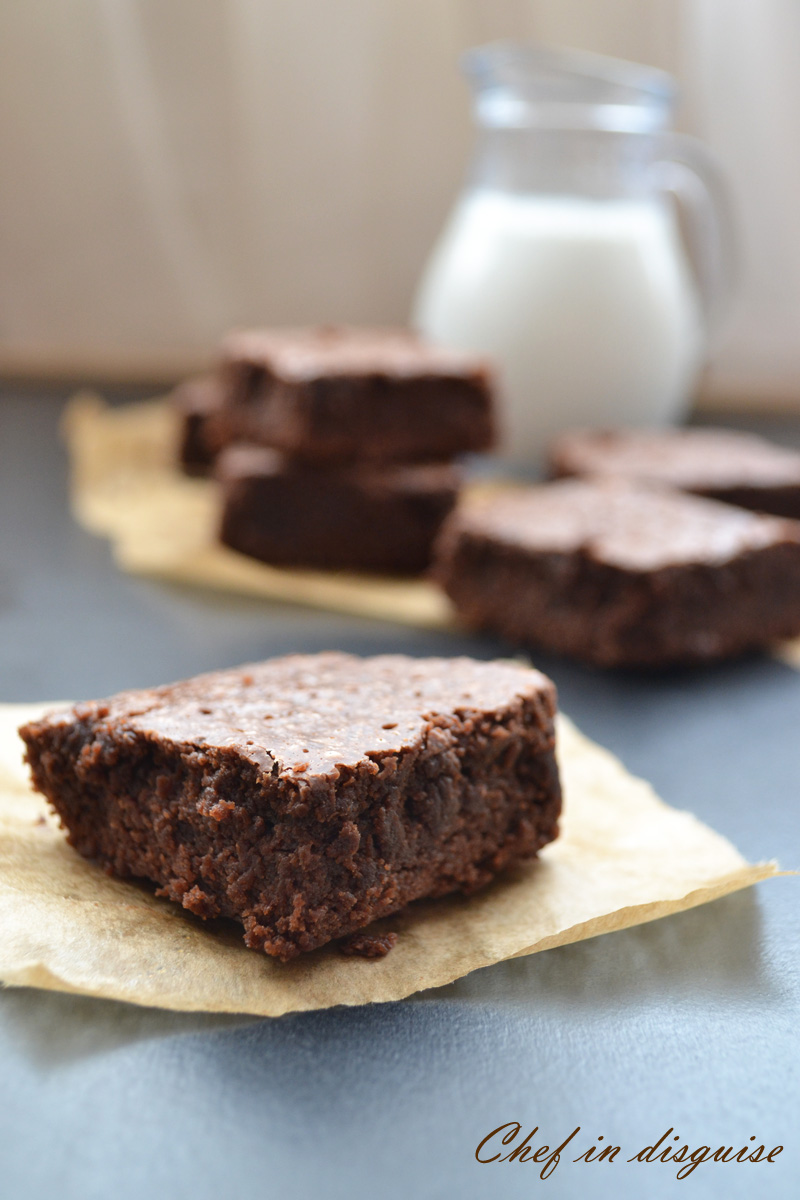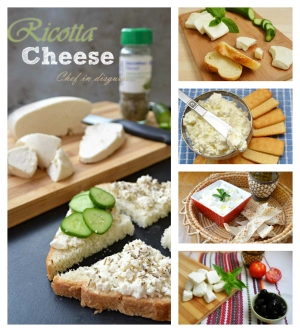Over a year ago we had a daring bakers challenge called (letting nature do the work). The challenge was to make sourdough bread with our very own sourdough starters. Back then the concept of sourdough was totally new to me, it was the middle of the winter here and let’s just say that the out come was less than satisfactory. The challenge ended and I was not motivated enough to maintain my starter. A few of my daring baker friends did however maintain their starters and they took it a step further and started a group called sourdough surprises. Every month they select a theme and use their sourdough starters to bake tempting creations. I have followed their sourdough adventure and with each passing month I keep telling myself, I need to give sourdough another try. However it was not until a post by the wonderfully talented Sally from bewitching kitchen about taking a walk on the wild side that I actually did it. Sally has a passion for sourdough and it shows in her collection of sourdough bread recipes, her description of each loaf’s crust, crumb, taste and texture. You read Sally’s posts about sourdough and you can’t help being tempted to answer the call of the wild 🙂
Why should I bake with sourdough?
You may ask , why should I bother. Packaged yeast is easier to use, less messy and gives faster results. That may be the case but you will be missing out on the health benefits of sourdough. The bacteria and yeast in the sourdough culture work to predigest the starches in the grains, thus making it more easily digestible. Added to that, the longer soaking and rising times in the preparation of sourdough breaks the protein gluten into amino acids, making it more digestible. The longer rise time needed for sourdough increases the lactic acid and acetic acid this helps preserve the bread by inhibiting the growth of mold.There have also been some research suggesting that the subjects’ blood glucose levels were lower after eating sourdough white bread compared to whole wheat, whole wheat with barley and plain white bread.
All that might convince you to try sourdough bread but it is the taste that will get you hocked! The tang, the rich flavor, complex and interesting is unlike anything you have tried before. Be warned, once you give your own, homemade sourdough bread a try, there will be no turning back.
Ready to sourdough?
I decided to put together a tutorial about creating your own sourdough starter for those of you who would like to come along on this sourdough adventure. An easy step by step post on how to start, feed and maintain your starter.
Sourdough starter 101
Day 1:
Ingredients
4 1/2 tablespoons (70 ml) (40 gm/1 ½ oz) stoneground breadmaking whole-wheat or graham flour
3 tablespoons (45 ml) water
Directions:
1. In a Tupperware or plastic container, mix the flour and water into a paste.
2. Set the lid on top gently
3. Set somewhere warm.
What to expect?
At this stage the starter will be really thick in consistency, that’s normal
Day 2:
Ingredients
4 1/2 tablespoons (70 ml) (40 gm/1 ½ oz) stoneground breadmaking whole-wheat or graham flour
3 tablespoons (45 ml) water
Starter from Day 1
Directions:
1. Stir the flour and water into the mixture from Day 1, cover, and return to its warm place.
What to expect?
Not much will change by day two, the consistency will be slightly thinner but that’s about it
Day 3:
Ingredients
4 1/2 tablespoons (70 ml) (40 gm/1 ½ oz) stoneground breadmaking whole-wheat or graham flour
4 teaspoons (20 ml) water
Starter from day 2
Directions:
1. Stir the flour and water into the mixture from Day 2, cover, and return to its warm place.
What to expect?
This is the day that you will start to see some activity in your starter, a few hours after adding the flour and water you will start to see bubbles forming. You will also start to detect an unpleasant smell, don’t panic! That is perfectly normal.
Day 4:
Ingredients
3/4 cup plus 1½ tablespoons (205 ml) (120 gm/4 ¼ oz) unbleached all-purpose flour
1/2 cup less 4 teaspoons (100 ml) water
Starter from Day 3
Directions:
1. Stir the flour and water into the mixture from Day 3, cover, and return to its warm place.
What to expect?
Today your starter should really come to life, it will show more bubbles, and a more pronounced smell. It should also begin to rise a few hours after feeding. Now you need to watch your starter closely. If the starter doubles itself between feedings (we feed every 24 hours) then it is ready. Mine rose but it was not able to double itself. In this case you need to go to day 5
Day 5
Ingredients
100 grams of the starter from day 4
100 grams water
100 grams AP flour
Instructions
Add the water to the amount of starter you measured, stir
Add the flour and stir until you get a homogenous mix.
Place in a clean jar or container and mark the level


What to expect?
More bubbles, a little more smell but most importantly, your starter should be able to double itself within 24 hours.
Depending on how warm or cold the weather is and how active your starter is it may double with in 4-8 hours of feeding. Sometimes it takes a starter longer than that, don’t worry.
If 24 hours pass and your starter still did not double itself, repeat the same steps we did in day 5 until your starter can double itself.
My starter is bubbling and can double itself between feedings, what now?
Congratulations! you are the proud parent of a healthy baby starter 🙂 pat yourself on the back or do a happy dance 🙂
Now you need to know how to maintain it to keep it healthy and alive
Maintaining your starter
Feeding
I feed using a 1:1:1 ratio. I feed my starter its weight in water and its weight in flour,that means :
If I have 100g starter, I feed it 100 grams water and 100 grams flour.
Each feeding should be equal amounts of water and flour, by weight. You can use about 2 parts of water to 3 parts of flour by volume as an approximation.
Each feeding of the starter should be enough to double its size but if you keep doubling the size of your starter, in 10 days you’ll have enough to fill a swimming pool. And 12 hours later, you’ll have enough to fill two swimming pools. So, before you feed the starter, take part of your starter and set it aside. You may discard it, or you may save it for other projects like making biscuits, pancakes, cakes, pizza shells. Then feed the remaining part of your starter
Storing your starter
You have to options when it comes to storing your starter. Keeping it on your counter top or storing it in the fridge.
If you keep your starter on the counter top: You need to feed it once every 24 hours
If you keep your starter in the fridge: You need to feed it once a week. Take it out of the fridge, feed it , give it a couple of hours to begin to rise then put it back in the fridge
when can you optimally refrigerate a starter? The starter should be at least 30 days old, having been fed once a day the entire time. It should be able to make bread you like – why store a starter that isn’t working for you? . Next, the starter should be able to double it’s size between feedings. If it’s not healthy, it’s not a good idea to refrigerate it. And finally, the best time to refrigerate the starter is when it is freshly fed. So, feed your starter until it will double in size between feedings, feed it one more time and then refrigerate it.
Do I use the starter I keep and feed in recipes or do I use the discard?
It depends on the recipe. Some recipes will state “fed” starter. Others will ask for the discard (the part of the starter you remove before feeding your starter). If the recipe doesn’t state it, I would usually feed my starter , wait for it to double then use it
Temperature
In broad terms, you want to stay within the 65 to 85F range (18 to 30C). If you get much below that range, things will take far too long to happen. Above that range, you get into off tastes and organisms dying off.
How does a sourdough starter work?what is the science behind it?
Sourdough to put it simply is bread made the way people used to make it before the age of packaged yeast. It is basically a process of mixing water and flour to form a starter that you then feed to culture the natural yeast that is in the flour, that yeast once active and alive provides the rise for your bread or a variety of baked goods.
The more you read about sourdough the more you see the science behind it all.Most sourdough starter recipes ask for starting with whole grain rye or wheat flour and the reason behind that is the fact that when you use whole grain rye or wheat flour, the flour is covered with a LOT of microorganisms. We’re interested in two of them, yeast and lactobacillus bacteria. When we mix flour and water, and keep adding more flour and water we are encouraging the critters that we want to take over the starter. By creating a hospitable environment, the organisms we want will inevitably take over the culture. However,there will still be unwanted microorganisms. As long as you keep the conditions in your starter favorable, the unwanted organisms will be kept under control. But, if you stop treating the starter right the unwanted critters can take over.
What can I make with my sourdough starter?
This is the fun part! You can use your starter to make cinnamon rolls , bread, muffins, cakes,pizza crust, grissini,English muffins, pasta, pancakes, brownies, soda bread. You name it. Over the next few weeks I will be sharing the things I make with my sourdough starter. So far I have made Sally’s olive sourdough bread. I also tried sourdough brownies, grissini and turkish simit. All of which I will be posting soon.



























